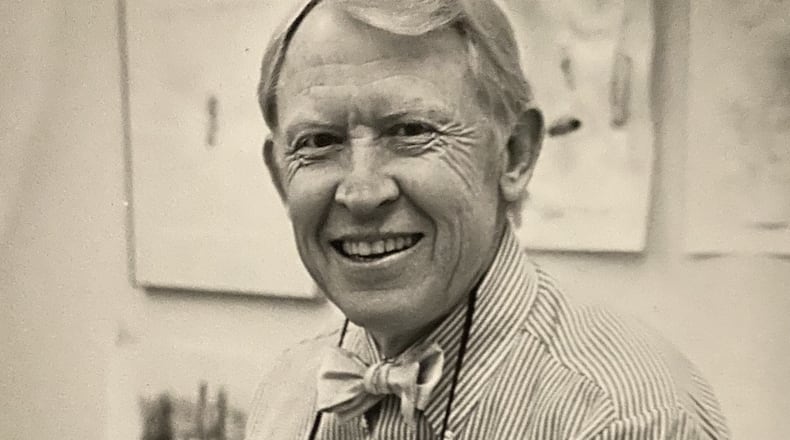During the AIDS crisis in the 1980s, Athens artist Bill Paul was installing an exhibition in an empty downtown Augusta store when the police chief decided to censor it by covering the building’s windows with brown paper. He was hiding from passersby the view of Paul’s work — books, with nails driven in them, including a Bible; a manikin wrapped like a mummy; and a jar filled with hypodermic needles.
The vigorous contempt of his work in Augusta included accusations of blasphemy and the belief that his work referred to a satanic drug culture.
At the time, Paul said, “If artists were sensitive to people all the time, there would never be any change in the status quo.” The upheaval led him to become intensely focused on social and larger political issues of the time: freedom of speech, censorship, gender issues and the HIV epidemic, according to his daughters. The hot button issues expressed in his artwork and installations — made with a combination of photographs, found objects and other materials — were consistently misinterpreted by people, not just in Augusta, but also in Orlando and New Orleans.
“Our dad was known for doing remarkable things,” said Sarah Paul. “He was always engaged in local, regional and national arts movements.”
University of Georgia art professor, artist and former museum director William Dewitt “Bill” Paul died May 3 at home with his three daughters by his side. His wife, Dorothy Hefling Paul, died in 2013. He was 89.
Bill Paul was born in Jefferson County’s tiny Wadley, the only child of Sonoma and Dewitt Paul, who farmed and ran a general store. He was paddled in elementary school for doodling on his shoe, but he kept drawing and doodling, encouraged by both teachers and artists in Wadley. By the end of middle school, he was selling his watercolors.
In 1950, he won $350 in a drawing and used the money to enroll at the Atlanta College of Art for two summers before he finished high school. His summer studies at the Atlanta College of Art helped solidify his academic journey and career path. He earned a Bachelor of Fine Arts at the Art Institute and then headed for Athens and two more degrees, a bachelor’s and a Master of Fine Arts from the University of Georgia. From there, he went to the Kansas City Art Institute, teaching and directing exhibits. Dorothy and he met in Kansas and married in 1962.
By 1965, the Pauls were in Athens, where Bill joined the university art department. In 1967, he was appointed curator of the Georgia Museum of Art. Two years later, he was the director.
“Bill’s attitude was to bring the world to Georgia,” said retired UGA art professor Judy McWillie. “He had contacts in the museum worlds of New York and Washington, D.C., and he curated exhibitions with other museums in the country.”
Paul was an early advocate for portrait painters Alice Neel, Gregory Gillespie and Phillip Pearlstein, giving each of them a major exhibit. The catalog for the Neel show is the touchstone for other scholars of her work. She became friends with Paul, his daughters said, and even painted his portrait. Rather than accept the painting as a gift, he convinced her family to donate it to the Georgia Museum of Art.
In 1980, the UGA administration dismissed Bill Paul from the museum. They wanted it to be a regional museum, featuring mostly Georgia artists, said Sarah Paul, “but my father understood Mr. Holbrook’s vision, and administration didn’t want that. So, they fired him.” The UGA press released stated that he “relinquished” his position. According to his colleague McWillie, “for Bill, it was a huge betrayal. It really shook him up.”
He lost his voice for a while. One good development, his daughters said, was that he quit smoking. Eventually, he found other artistic outlets, in teaching, making his “challenging” art works, doing tiny watercolors and working with the late Pat Gann to curate the visual arts section of the Arts Festival of Atlanta. Students flocked to him, said McWillie, because he was a demanding teacher “and because he brought an edge of art world glamour.”
Bill Paul retired from the university in 2002. Dorothy and he began collecting what he called 1920s and ‘30s “neglected American pottery” from the Mississippi Basin. He learned so much about the pieces that he became a scholar of pottery. He read widely, had a keen interest in native plants and pollinators, and he painted.
In addition to his three daughters, Bill Paul is survived by one nephew. There will be a celebration of his life in the summer.
About the Author
The Latest
Featured
